Tunics, trousers, doublets &Co. – over the course of the ages, clothing for men shows a fascinating ability to change. Adapted in a modern way, many of these fashionable refinements and inspirations now find their way onto international catwalks. Historical men's fashion - from antiquity to the Middle Ages and Renaissance to the Baroque - is always a reflection of social conventions and moods. Welcome to a little journey through time!
Ancient men's fashion (800 BC - 600 AD)
Egypt and Israel
Last but not least, what men wore in ancient times reflected the state of the art of manufacture at the time:Archaeological finds show what was possible in ancient times with a wide variety of materials and tools, from fabrics to leather. And men's clothing already reveals a lot about the social position of its wearer. Cool, robust linen made from flax dominated in Egypt. The higher the level, the more finely woven and the more translucent the complex draped fabric panels, garnished with woven color accents and feathers. Wool, because it was of animal origin, was considered unclean and was forbidden in the temple for religious practice, while furs were reserved for priests. While the upper class wore long, workers and farmers wore shorts for (field) work in order to improve mobility. With the New Kingdom, Egyptian menswear became more sophisticated, discovering garments made of layers of linen with inner linings. An Egyptian peculiarity:the wearing of ornaments, for example as an ensemble of golden plates, placed on the breast skin or shirt and tied at the back. In addition, the loincloth or Schenti was represented across all classes.
Here men of higher status wore longer models, combined with a finely draped cape or tunic. Pleated skirt was worn by women and men. On the other hand, it was frowned upon to show too much bare skin:nudity was a sign of poverty - only slaves were naked. Israelite men wore the ezor, a girdle or loincloth made first of animal skin, then as a simple, skin-hugging piece of cloth fastened with a belt. This was later replaced by the Hebrew Kuttoneth, a close-fitting coarse undertunic with wide sleeves that reached to the ankle. However, it was only allowed to go out in the field without an outer garment – the simla made of heavy wool. In society, anyone who appeared only in the kuttoneth was considered practically naked. Later, the Simla changed from a simple overcoat for everyone to an ornamentally decorated, knee-length coat with sleeves - for men of high status.
Greeks, Romans and Teutons
The ancient Greeks also wore loincloths, but cut as a short skirt or apron, unlike in Egypt; the fabric passed between the legs to cover the genital area. A metal-embellished leather belt kept the whole thing in place. A practical piece of clothing, the first shorts in men's fashion:the antique variant was comfortable and offered a lot of freedom of movement during sporting activities. Long garments, on the other hand, were mainly weather protection - such as woolen coats. The comparatively complex design of the robes was characterized by bright colors. Linen or wool was secured with clips or pins (fibula, etc.), and belts or sashes ran around the waist. An inner tunic, the chiton - often depicted folded - consisted of simpler, lighter linen.
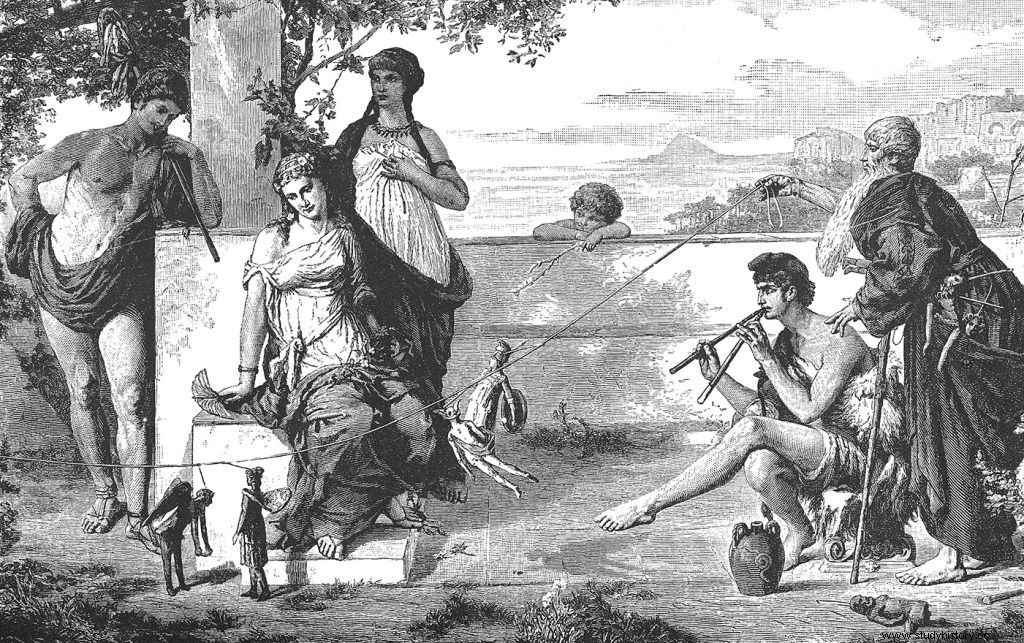
But while women wore it ankle-length, men only wore it to their knees. Greek men and soldiers put the chlamys over it, a cloak made of seamless woolen fabric, which – wound around the arm in battle – also served as a protective shield. And in the cold season? Complemented a cloak, the warming Himation, the Chlamys. In ancient Rome, on the other hand, clothing without a toga was unthinkable:the white, woolen one-piece suit was draped loosely around the shoulders – and over the centuries it became more and more voluminous and rich in material. Seneca personally reprimanded men for wearing the representative toga carelessly and derided transparent fabrics on men as effeminate. A recognized status symbol, boys before puberty wore the toga praetexta, recognizable by the purple edging. Age, profession and rank could be read from the toga design:only free citizens of Rome wore togas - and the rules allowed only the emperor to wear costly purple robes.
Slaves and children wore tunics, which in later times – because they resemble outer garments and are practical – triumphed over the toga. When it came to military clothing, the muscular armor of Roman armor stood out—plus the cuirass and military cloak. Yes, the Romans recognized very well that they were fashionably special - even in comparison to the Germans, who were derided as barbarians. For they wore shirts and trousers. Woven wool and linen fabrics showed their closeness to nature. Clothing characterized by short or long trousers plus a smock with or without sleeves. The special Viking garb had to do one thing above all – withstand the cold north wind, i.e. the weather. The Vikings probably invented the onion look or layered look? Calf wraps or leg wraps, woolen pants, undertunic plus another warming tunic layer as the crowning outfit conclusion speak for it.
Clothing in the Middle Ages (500 - 1500)
Medieval leg warmers and breeches with lacing are considered to be the original models of today's trousers. He wore a shirt with it, cut like a kind of T-shirt, but made of linen. The order of status is clearly shown here:the simple folk of farmers, day laborers and craftsmen showed themselves in clothing made of wool and linen, while the nobility and merchants wore colorful velvet and silk. And men's underwear in the Middle Ages? A simply cut shirt, with wide-cut shorts, the breeches to be closed with a breeches band. On top of this, men wore outerwear made of a casually falling woolen smock that covered the knees, called a cotte. A strong cloth was used as a cover over the upper body and back. In certain higher classes, the gentlemen also dressed in wide harem pants, wrapped in calf wraps; Fibulae guaranteed a firm hold. Later, this garment was replaced by leg warmers, skin-tight stockings. The High Middle Ages finally brought the doublet, a hip-length outer garment without sleeves, to which the leg warmers or sleeves mentioned could now be docked - or rather, attached - as required. Over it one wore - e.g. B. for horse riding - a cape, called Heuke.
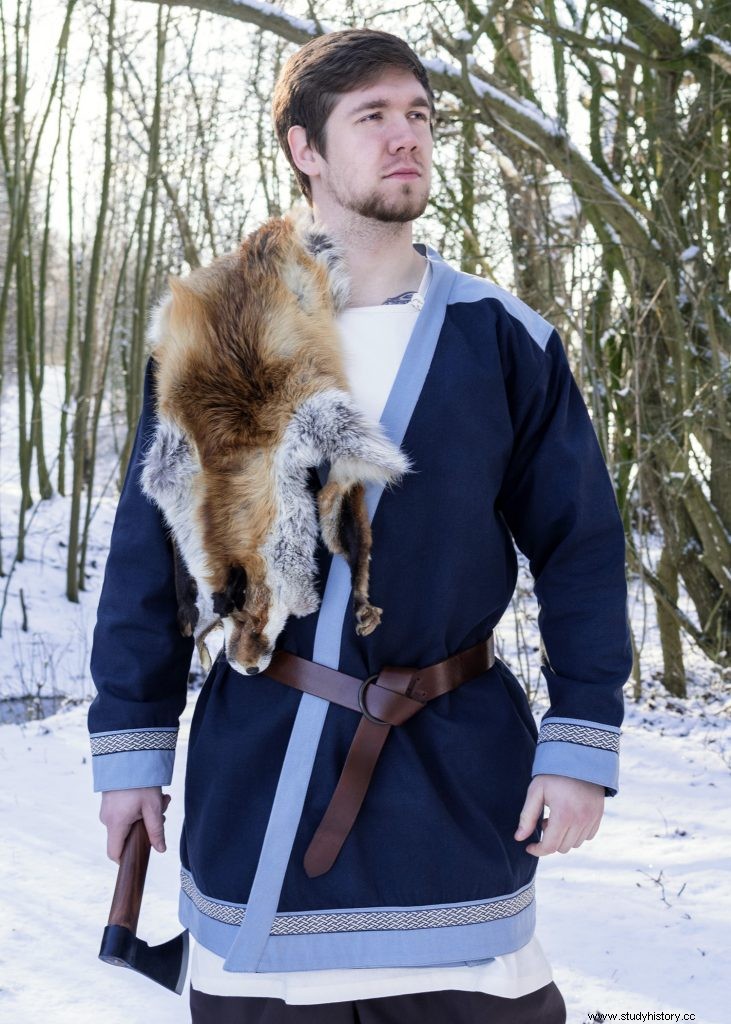
Bjorn flap skirt
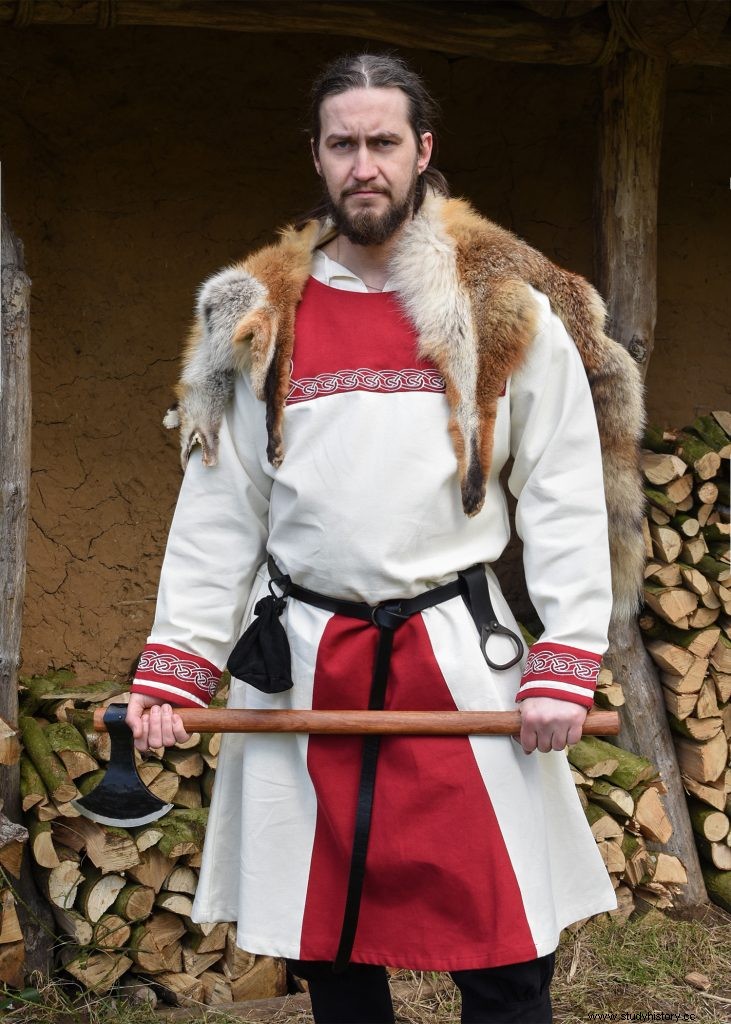
Tunic Halvar
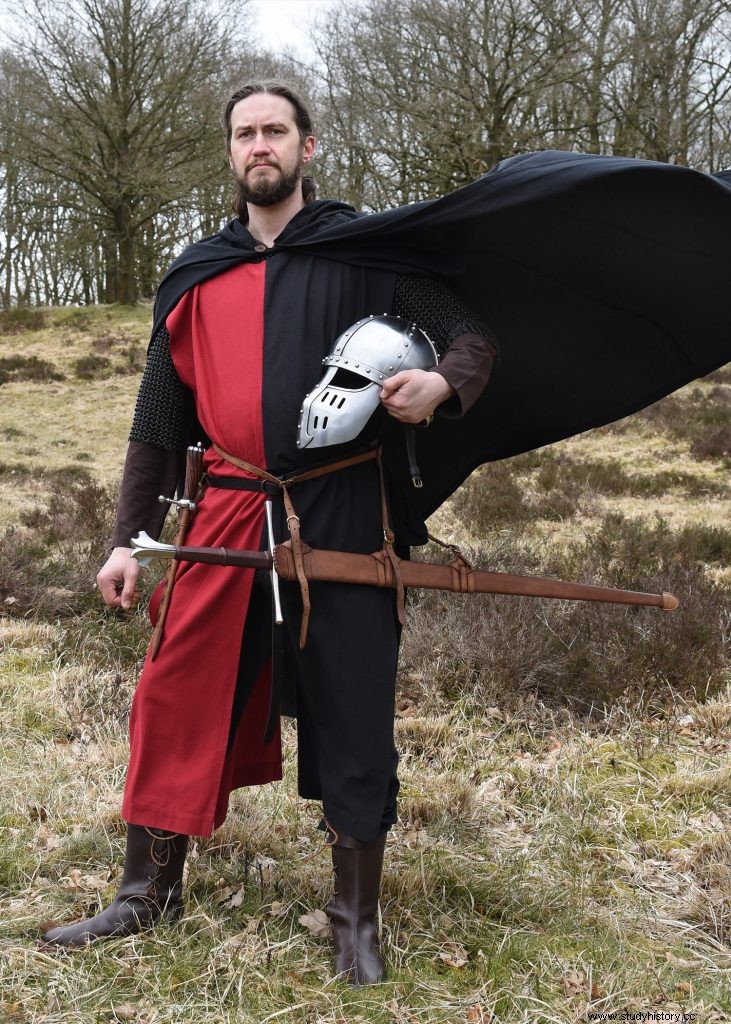
Hooded cape
Men's fashion in the Renaissance (1500 - 1600)
With the Renaissance – the rebirth of ancient ideals – European societies experienced liberation from the religious dogmatism of the Middle Ages, in science and in the arts. Men's clothing underwent another change in the direction of magnificent men's fashion that emphasized the personality and individuality of the wearer. Something that - in comparison to the Middle Ages - was not only shown in more sophisticated cuts, color nuances and draperies. The variety of available materials and fabrics also grew:in addition to linen and wool, velvet, brocade, damask, satin and furs appeared, as well as silk as a warming, elegant lining material. Valuable fabrics that were no longer reserved for the well-to-do few, but were now available to larger groups. Also new:trousers now replaced leg warmers, and doublets and jackets were worn with them. Florence was the center of the so-called Golden Age, characterized by an upswing in trade and social upheaval. Time to show who you are - in status, education and character! Valuable fabrics in bright colors defined the picture - a robe that guaranteed an impressive appearance in sunlight and candlelight. This men's fashion was anything but rigid, but focused on natural freedom of movement - whether it was a doublet with voluminous sleeves or a zimarra, a type of coat with a simple fastener at the front that could be removed quickly and easily. In addition, magnificent tricot trousers, rich in details, should not be missing. More than ever, Renaissance menswear represented personal style, from head to toe.
Baroque and Rococo (1600 - 1770)
One aspect of baroque men's fashion is the so-called soldier's fashion, because the Thirty Years' War fell during this era. In the early Baroque, men wore wide skirts, knee-high leather collars and knee-length, generously cut trousers in the manner of Dutch officers. Subsequently, France's prominent influence created new trends in men's fashion. Because now the Sun King Louis XIV is fashionably directing:the magnificent garb of the nobility in skirts with turned-up sleeves characterize the image of the high baroque. Rhinegraves' costumes, doublets, shirts and jabots with neckties or ties became fashionable throughout Europe. The baroque enjoys excessive, often overloaded play of forms and patterns and deliberately staged color contrasts. The pompous robes of the baroque period loved shirts and jackets that were figure-hugging and body-hugging in the waist area.
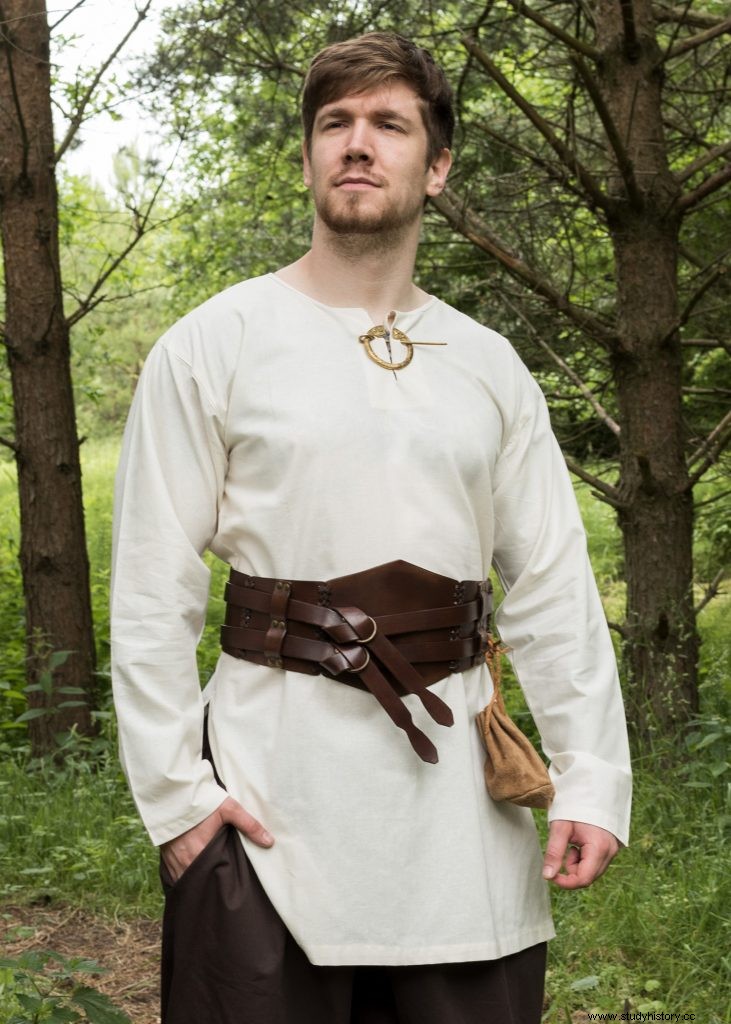
Tunic Gunther
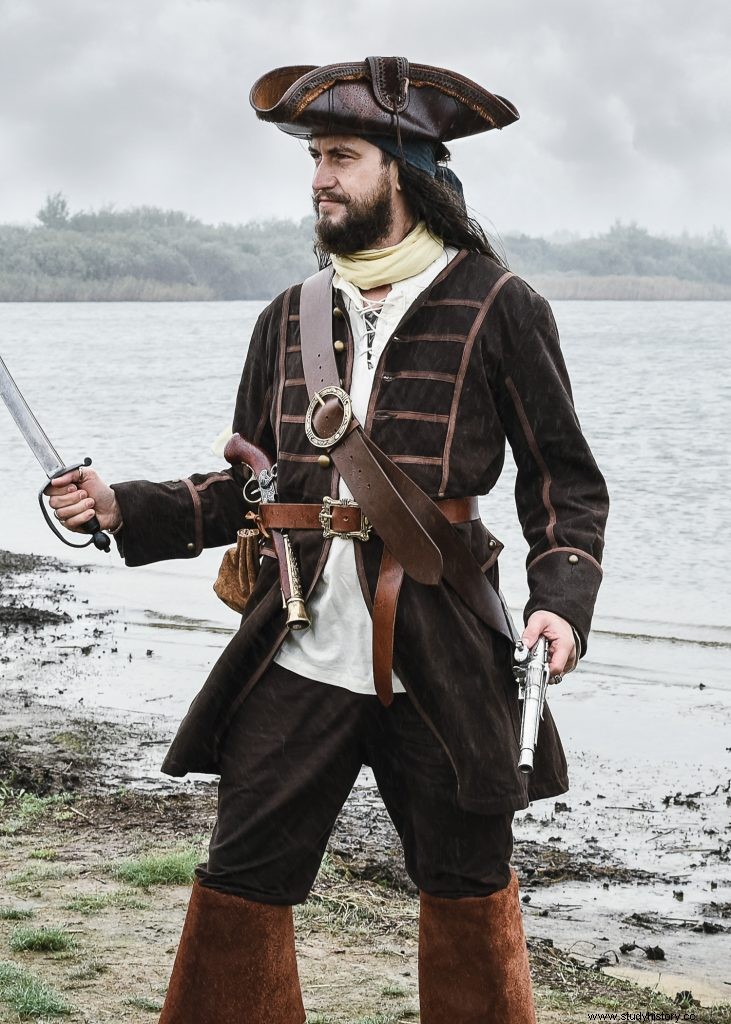
Coat - Justaucorps
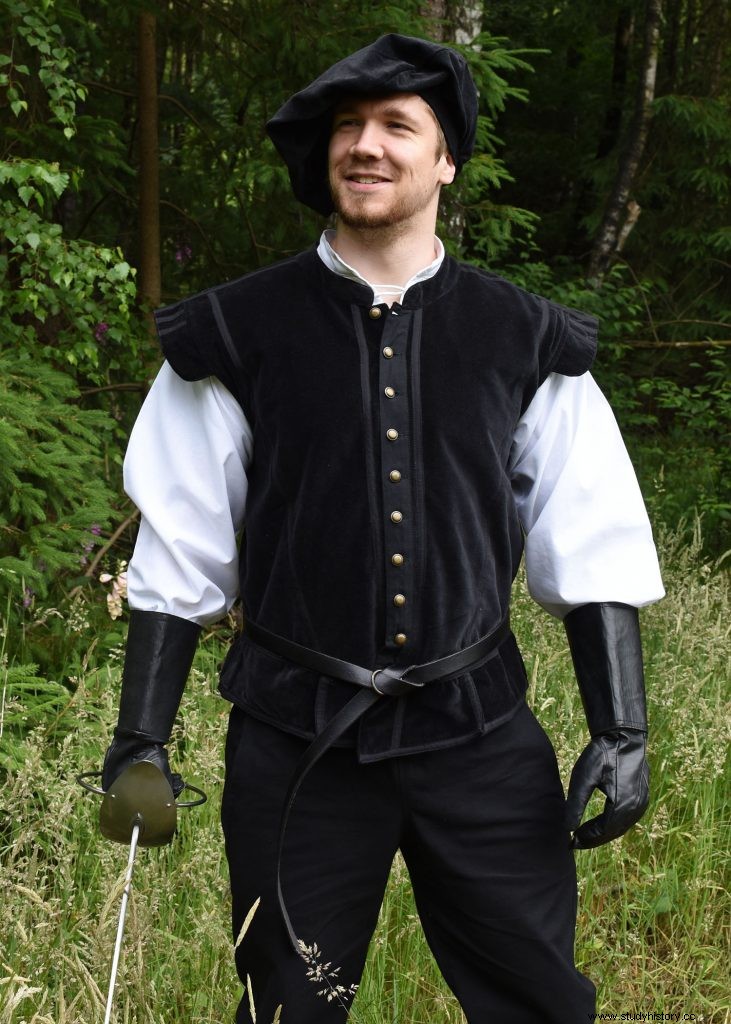
Velvet Doublet Victor
The late baroque added the justaucorps as outerwear with wide cuffs and the culotte, the knee breeches. Rococo men wore tails and suits – with knee-length skirts. This Justaucorps, for buttons or with non-functioning decorative buttons, was often worn open. The associated, sleeveless and richly decorated waistcoats with lacing made it possible to adjust the width as desired. With patch pockets, the waistcoat generously covered the hips. An unexpectedly comfortable outfit, because the knee breeches (culotte) were wide enough at the buttocks to ride comfortably in them. Nonetheless, men's fashion in the rococo period surpassed everything that the baroque had in terms of sumptuous splendor in its final phase - supplemented by British influences. The model is the English landed gentry with breeches and hunting clothes. Garb in which men of rank no longer only showed themselves confidently at court, but now on all social occasions in the salons of Paris.
Discover historical men's fashion from antiquity to the baroque for yourself?
Speaking of self-confidence:Men's fashion of all eras has in common that it not only fulfills functional aspects, but also always formulates aesthetic statements! Historical clothing decorates, transports moods and is an expression of attitude to life. To cut a long story short:simply experience historical fashion for men yourself, from tunics to flapped skirts, cottes to justaucorps - and much more...!
